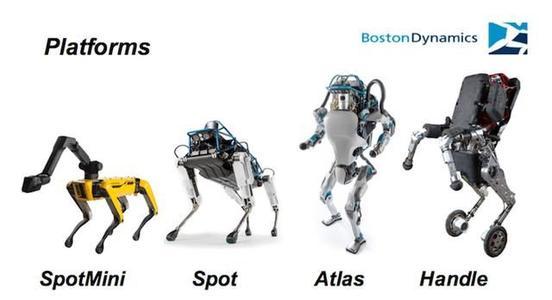Position’╝�Home > education > Content
A Brief History of Robot Development: From Ancient Clevernes
Date’╝�2025-03-21 16:13Editer’╝ÜadminRead’╝�’╝�

In today's era, robots driven by artificial intelligence have deeply integrated into daily life, bringing convenience and surprises to people. However, robots are not exclusive products of modern society, and their history can be traced back to the distant past. As early as the 12th century, Ismail Jazari, a Türkiye inventor, showed extraordinary creativity and invented a series of amazing "service robots". ŌĆ�
Jia Zhali's most famous invention is undoubtedly the water robot band. This unique device can float on the water surface, specifically adding a joyful atmosphere to aristocratic gatherings. The band consists of four "musicians", namely a harp "player", a flute "player", and two "drummers". The movements of each robot 'musician' are carefully designed and seamlessly coordinated with each other. They rely on a complex and intricate mechanical system to operate, using flowing water to drive a series of gears to rotate, thereby precisely controlling the movements of the robot "musician"'s arms, fingers, and other parts. This exquisitely designed mechanical band frequently appeared at aristocratic cocktail parties at that time, offering guests one wonderful audio-visual feast after another. ŌĆ�
Jia Zhali's invention is not limited to this, he also created a robot maid who can pour wine. The robot maid "stands" in a small compartment with a wine storage container above it. After the machine starts, the wine slowly drips down and it only takes 7 minutes to fill the wine jug in the maid's hand. After the wine is full, the machine automatically stops, the compartment door opens immediately, and the maid "walks out" of the compartment to pour wine for the guests. In addition, Jia Zhali has also developed a "maid" robot that can automatically pour water into the sink, as well as a robot that can deliver towels, combs, and other items to people in the bathroom. ŌĆ�
Jazari's outstanding inventions did not come out of thin air, but have a profound theoretical and practical foundation. In the hundreds of years before his birth, the local monarch established a library called the 'House of Wisdom'. This is not only a treasure trove of books, but also a core place for academic exchange around the world, gathering a large number of books from China, India, and ancient Greece, covering astronomy, mathematics, medicine, philosophy, and many other fields, attracting countless scholars from all over the world to come and translate and research. ŌĆ�
Jia Zhali can be regarded as one of the outstanding scholars among many. He served as the chief engineer of the court for many years, during which time, with his love for learning and invention, he designed many exquisite mechanical devices and completed an important work called "The Book of Clever Mechanical Device Knowledge". The book detailed the 50 mechanical devices he designed, including robots, sophisticated clocks, and password locks, leaving an extremely valuable wealth of knowledge for future generations and laying the foundation for the subsequent development of human automation technology. After Jia Zhali's invention, various "service-oriented robots" with their own characteristics emerged around the world. ŌĆ�
In the late 15th century, the genius artist and inventor Leonardo da Vinci designed a structurally complex "knight" robot. Although we can only imagine its appearance through the design drawings he left behind, we can still feel the wisdom and creativity of Leonardo da Vinci beyond the times from the drawings. In the 1830s, French inventor Vauconson created a life sized "flutist". The exterior of this robot is decorated with wood, leather, and cardboard, while the interior is a complex set of mechanical devices. By driving this set of machinery, the mouth, tongue, and fingers of the "flutist" can move flexibly and play 12 pieces according to the preset program, and its realistic performance effect is amazing. ŌĆ�
In the late 18th century, Swiss watchmaker Jacques Dro created several breathtaking robots. Among them, the robot "boy" named "writer" can pick up a quill and write beautiful and smooth words on paper. Its internal mechanical device is extremely complex, controlling the movements of the "boy" through the coordinated operation of gears and other components, vividly simulating various details of manual writing, such as pen holding posture, arm movement trajectory, and stroke thickness control. The robot named "Painter" has painting ability and can use a paintbrush to draw portraits of King Louis XV. Its painting skills and realism are amazing. Jacques Dro also invented a "musician" mechanical puppet that could play the organ. What's even more amazing is that its head and eyes would naturally move with the movements of its fingers, as if a real musician were performing. ŌĆ�
The development of robots has witnessed the continuous inheritance and sublimation of human intelligence, from the groundbreaking invention of Jazari in the 12th century to the exploration and innovation of inventors at different times such as Finch, Wolkonsson, and Jacques Dro. Although these early robots had significant differences from modern highly intelligent robots, they undoubtedly provided inspiration and technological prototypes for the development of modern robotics technology. With the passage of time and the continuous advancement of technology, robots will undoubtedly play a more important role in more fields in the future, continuously changing and enriching human life. ŌĆ�